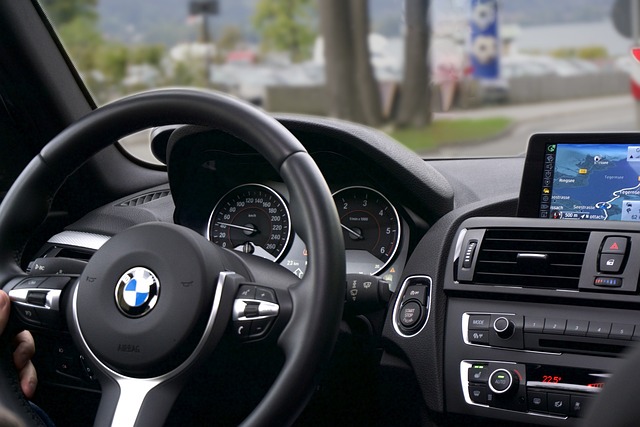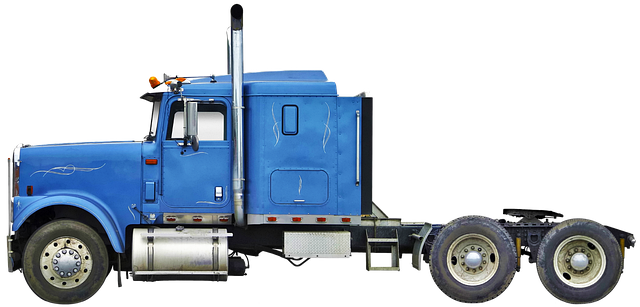Looking to register your car in California? This comprehensive guide walks you through the entire process, from understanding key requirements to securing your license plate. We’ll break down the necessary documents, steps at the DMV (including VIN verification), and how to pay registration fees. By following these clear instructions, you’ll be cruising down California’s roads legally and smoothly in no time with your new registration.
- Understand California Vehicle Registration Requirements
- Gather Necessary Documents for Car Registration
- Visit or Contact the DMV for Registration Process
- Verify VIN and Complete Online Application (DMV)
- Pay Registration Fees and Receive Your License Plate
Understand California Vehicle Registration Requirements

Before diving into the registration process, it’s crucial to understand California’s vehicle registration requirements. This includes ensuring your car meets all safety and emissions standards set by the state. One essential step is obtaining a Vehicle Identification Number (VIN) verification from a trusted source, such as a mobile VIN verifier or through a formal vin inspection at a designated location.
The Department of Motor Vehicles (DMV) plays a pivotal role in this process, overseeing vehicle registration and ensuring compliance with local regulations. By using approved methods like a mobile VIN verifier, you can streamline the initial verification step, making your car registration experience smoother and more efficient.
Gather Necessary Documents for Car Registration

Before you start the registration process, ensure you have all the required documents ready. The California Department of Motor Vehicles (DMV) will need several pieces of information to verify your vehicle’s identity and status. One crucial document is the Vehicle Identification Number (VIN), which can be found on the car’s registration certificate or in its manual. A reliable method to obtain this unique identifier is through a DMV-approved VIN verifier, such as those offered by mobile services that conduct remote VIN inspections.
Additionally, you’ll need proof of insurance, a valid driver’s license, and the previous owner’s signature (if applicable). It’s important to double-check with your local DMV office for any additional requirements or specific forms needed, especially if you’re registering a vehicle out-of-state or have unique circumstances. Proper documentation is key to a smooth registration process.
Visit or Contact the DMV for Registration Process

To begin the car registration process in California, the first step is to visit or contact the Department of Motor Vehicles (DMV). This crucial initial stage involves gathering all necessary documents and ensuring your vehicle meets state standards. The DMV serves as a central hub for handling vehicle registrations, titles, and related services.
At the DMV, you can expect to utilize a variety of resources, including their Vin Verifier tool, which cross-references Vehicle Identification Numbers (VINs) against their records to validate ownership and ensure the vehicle’s history aligns with reported details. Alternatively, many individuals opt for a mobile vin verifier or inspection service, offering convenience by conducting these checks remotely, potentially saving time compared to in-person visits.
Verify VIN and Complete Online Application (DMV)

Before submitting your registration application, it’s crucial to verify your vehicle’s VIN (Vehicle Identification Number) using a reliable DMV vin verifier or even a mobile vin verification service. This step ensures that the information about your car is accurate and up-to-date, which is essential for a smooth registration process. Online platforms offer this service, allowing you to check your VIN in just a few clicks while ensuring a valid inspection.
When completing the online application with the DMV, have your vehicle’s documentation ready. This includes proof of ownership, insurance, and any relevant maintenance records. A mobile vin inspection can be beneficial here as it provides a convenient way to gather all necessary data, making the registration process quicker and less stressful.
Pay Registration Fees and Receive Your License Plate

After you’ve gathered all necessary documents and verified your vehicle’s eligibility for registration through a DMV VIN verifier, it’s time to pay the registration fees. California has specific fees based on various factors like the type of vehicle and emissions standards met. You can typically pay these fees online or at a local DMV office. Once your payment is processed, you’ll receive your license plate, which will be unique to your vehicle.
This process involves obtaining a registration certificate, also known as a “title,” which legally establishes you as the owner of the vehicle. It’s crucial to keep this document secure and up-to-date. In some cases, especially with mobile VIN inspections or vin verification services, you might opt for license plate delivery directly to your location, making the whole process more convenient and efficient.
Registering a car in California is a straightforward process, but understanding the requirements and gathering the right documents are crucial steps. By visiting or contacting the DMV, verifying your vehicle’s VIN using a reliable VIN verifier, completing the online application, and paying the registration fees, you can ensure a smooth and efficient registration experience. Remember to keep your license plate displayed properly for legal compliance.
